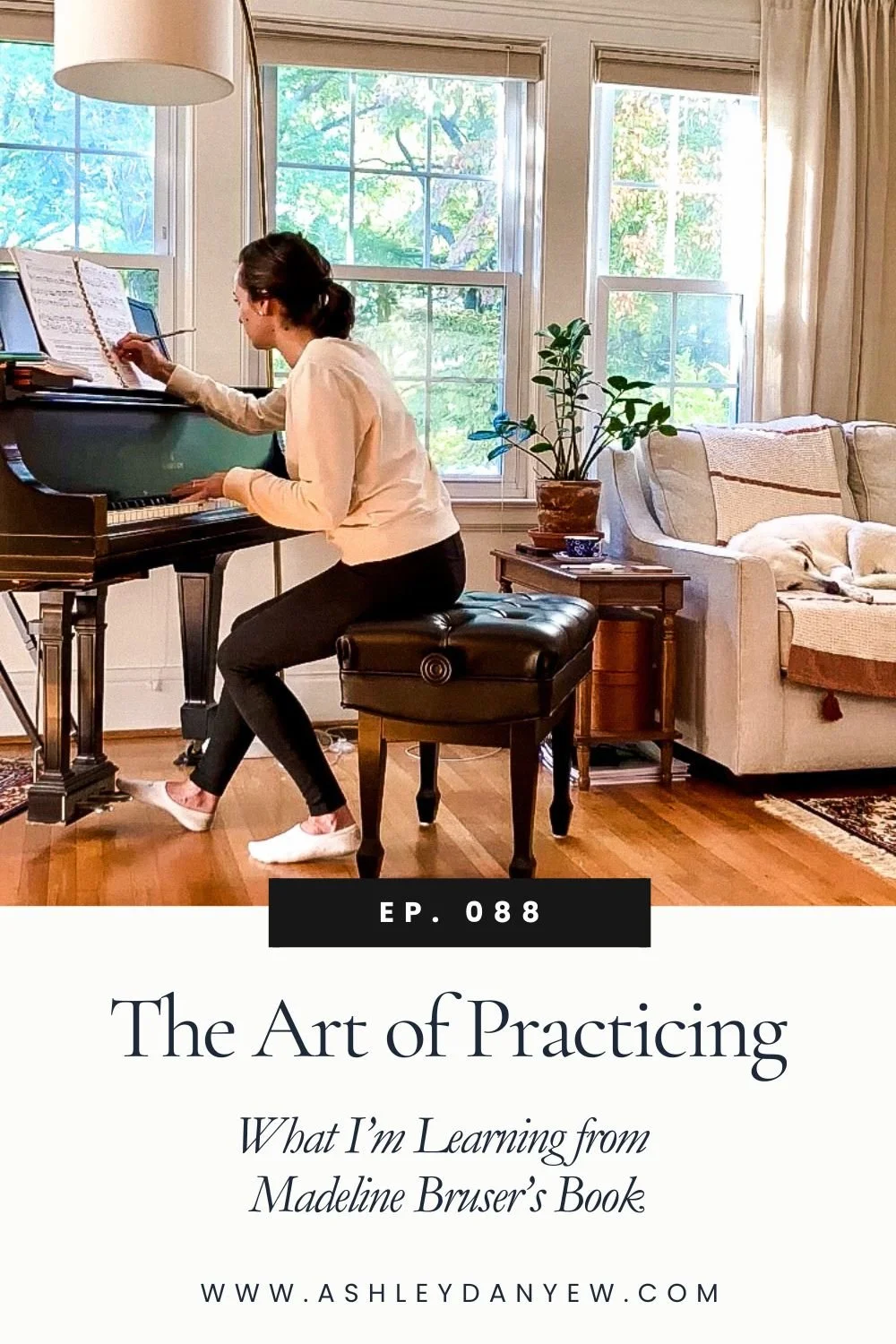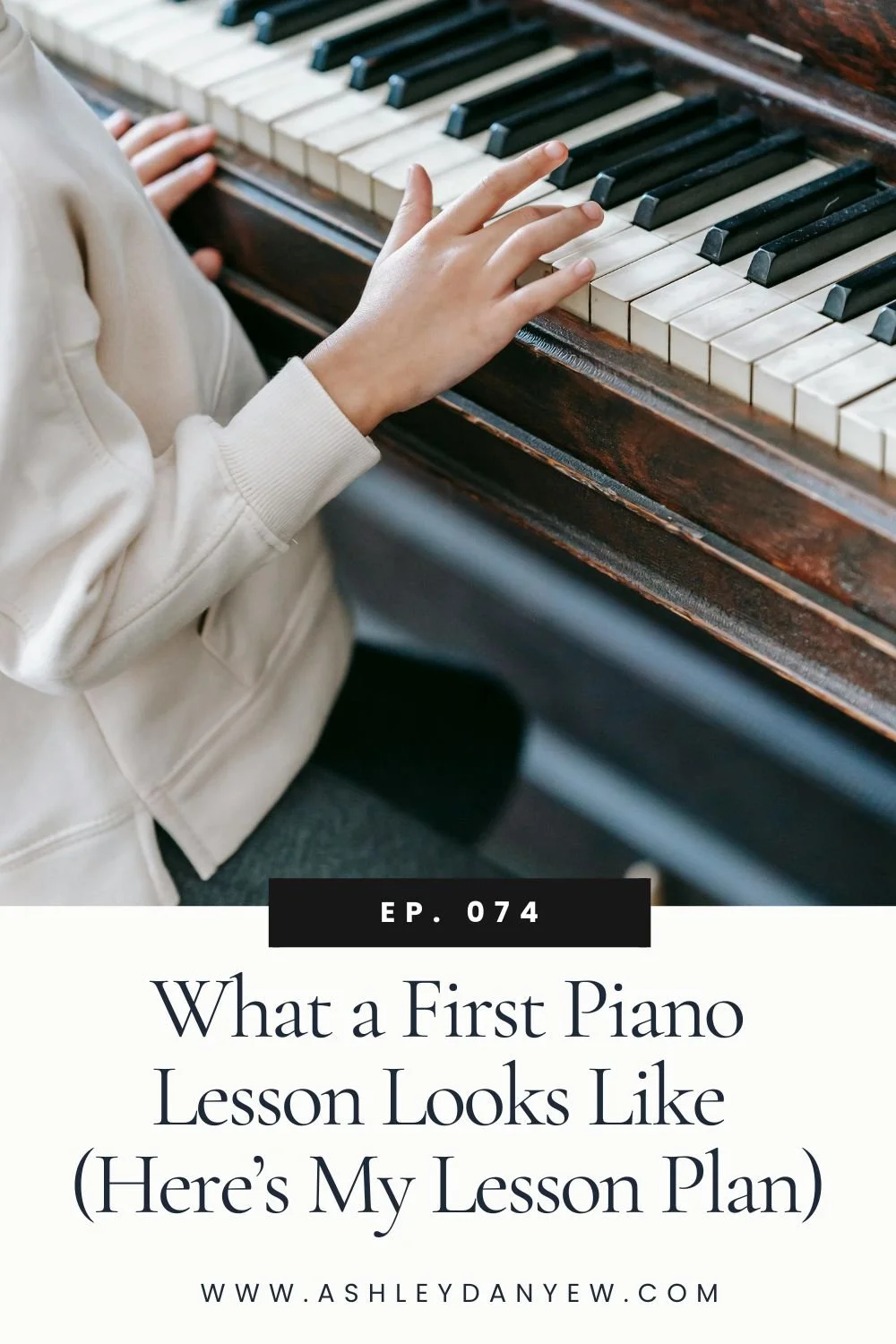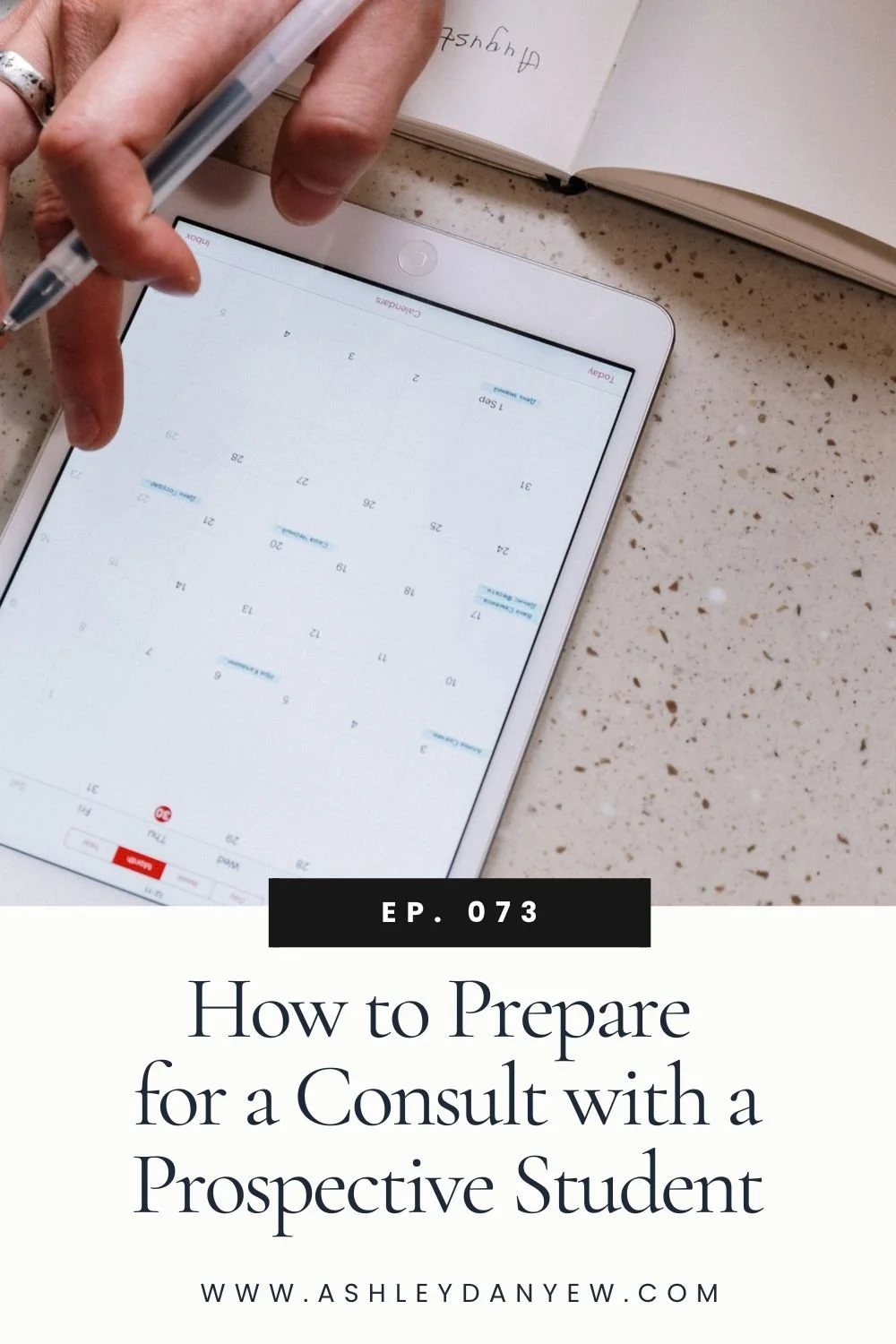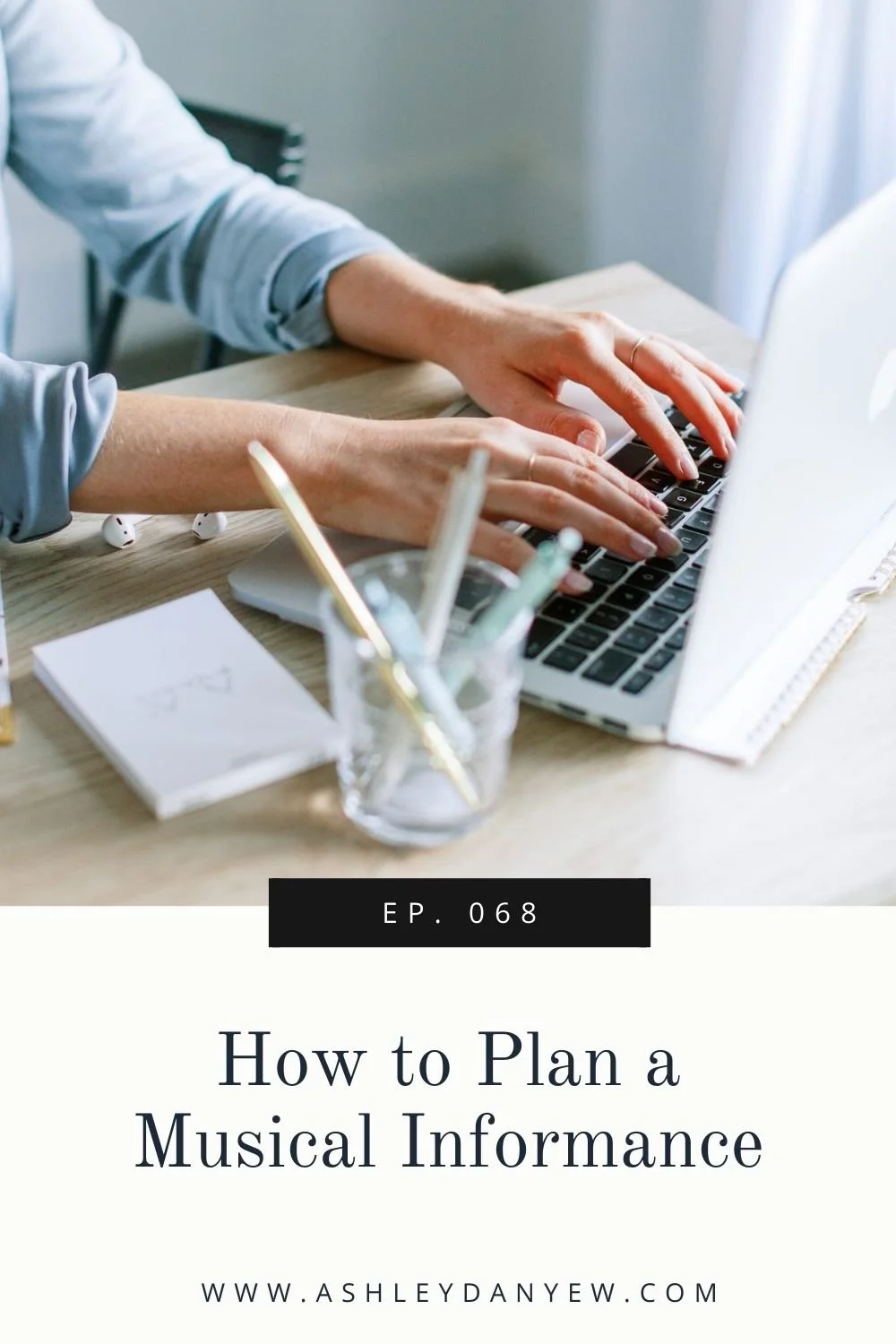Resources Mentioned
*Disclosure: some of the links in this episode are affiliate links, which means if you decide to purchase through any of them, I will earn a small commission. This helps support the podcast and allows me to continue creating free content. Thank you for your support!
Circus Sonatinas (Chee-Hwa Tan)
Through the Windowpane and A Child’s Garden of Verses (Chee-Hwa Tan)
Celebrated Lyrical Solos, Book 1 and Celebrated Virtuosic Solos, Book 5 (Robert Vandall)
Inspired Piano Teaching (Marvin Blickenstaff)
“Criss Cross” (Florence Price)
Ep. 081 - Celebrating Women in Music: An Inside Look at Our Studio Informances
Ep. 071 - 3 Things I Learned From Hosting a Musical Informance
Earlier this month, I hosted my 14th studio piano recital. There’s always so much that goes into planning and preparing for an event like this:
Choosing repertoire
Booking the venue
Polishing memory
Emailing parents
Practicing “piano bows”
Coordinating with the facilities manager and the piano tuner
Borrowing percussion instruments from the music teacher
Scheduling duet and ensemble rehearsals
Finalizing and printing programs
Planning a reception
We spend months learning the music and practicing performing. What happens if you play a wrong note or miss a key change? What happens if you forget the repeat or play the first ending twice?
We discuss arm movement and phrase shapes, articulation, and projection, and how it feels and sounds different in the big theater vs. the classroom where we have our lessons. We listen and observe.
Today, I’m sharing my own recap and reflection on this year’s recital—how it went, what I learned, what I observed, and how it’s shaping my teaching practice for the year ahead. To structure this conversation, I’ll use the 3-part framework: Prepare-Practice-Perform.
Prepare
I talked about how I plan and prepare for my year-end recital in Ep. 070 - The 3-Month Recital Plan. It covers all the logistics—coordinating with everyone, parent communication, and keeping students on a timeline. One thing I didn’t discuss in that episode is my approach to repertoire planning.
It starts with my annual repertoire planning session at the end of the summer. This is when I spend a few hours sitting at the piano with a stack of books, playing through selections, looking up supplemental collections, listening to recordings, and making notes. If you’re curious to learn more about how I plan a year’s worth of repertoire in a day, tune into Ep. 064.
From that initial repertoire list at the beginning of the year, I pull a few special pieces that I think will be a good fit for the student and provide the right amount of challenge. I like to choose at least one piece that’s outside their method book when possible. Some of my favorites from this year’s recital were:
Chee-Hwa Tan’s Big-Top Sonatina and selections from Through the Windowpane and A Child’s Garden of Verses
Pieces by Florence Price and Paula Dreyer
Robert Vandall’s “New Day Dawning” from Celebrated Lyrical Solos, Book 1 and “Ovation No. 3” from Celebrated Virtuosic Solos, Book 5
I like to plan the program so that no student is performing the same piece.
In fact, one of my 10th graders (who’s been taking lessons with me for 10 years) looked through the program this year and said, “Let’s see how many of these I’ve played.” A moment later, she said, “I don’t think I know any of these, except ‘Ode to Joy’!” I took that as a compliment. It’s a testament to how much music is out there and how many options our students have for performance pieces. They don’t all need to play the same things year after year.
I don’t require my students to memorize their recital pieces, though that often happens automatically (probably for at least half of the pieces). For those who wish to perform from memory, we practice this for at least three weeks prior, making sure that they have more than just the notes and rhythms memorized. We also need to be intentional about memorizing dynamics, articulation, form, and musical expression.
Which brings me to Part II: Practice.
Practice
In studio classes last month, we talked about three important elements of performance.
Of course, you could make a list with much more than three things, and my students had several important additions, such as music, the right notes and rhythms, articulation, an audience, and yes, clothes (obviously, essential).
In his book, Inspired Piano Teaching, Marvin Blickenstaff asks:
“What constitutes an artistic performance? We assume a correct reading of the score. For many students, that is a big ask. But accuracy is not artistry. An artist, young or old, examines the score carefully to discover the feeling behind the notes, to find the contrasts between sections, and to identify with the emotion that the composer has invested in the music. We need to preach a doctrine of emotions to students: that every piece of music is written for the same purpose—to express some aspect of the human experience.”
He goes on to propose that an artistic performance starts with a focus on three key words: dynamics, balance, and breath.
Dynamics
“Tones that stay on the same dynamic level do not move the sound forward,” he explains, “And therefore they fail to captivate our ears.” I talk with my students about music leading to something or away from something. Where is the peak of the phrase?
Balance
In regard to balance, Marvin writes, “How many times have you told students to project the melody and subdue the accompaniment? Balance is an essential constituent of artistry. Our ears are most interested in melody, and a lovely melody should be supported, but not encumbered, by the accompaniment.”
In lessons, we’ve been talking about lifting and dropping each finger into the keys to create a singing tone and playing the accompaniment with a “quiet hand,” fingers close to the keys with minimal movement. With one of my late intermediate students, we’ve talked about weighting the hand to one side to project the melody and even leaning the upper body toward the right to adjust balance.
Breath
On breath, Marvin writes, “One of the things we learn from singing is that breath is a natural part of music making. When our students do not take breaths between phrases, their performances are, in a word, unmusical. Music breathes.” We look through the score and identify the breaths: rests, ends of phrases, ends of sections. Do you hear the breath? Do you feel it?
In our studio classes, students took turns playing their recital pieces for the group. Each student performed one piece with their peers being a distracting audience (rustling papers, wiggling in their seats, sneezing, whispering, etc.).
I borrowed this idea from Samantha Steitz of Musikal Husky. The students get very into their roles with this one, but it’s a really great way to prepare performers. I was impressed when several students said afterward that they were able to completely tune out the distractions (including the time when one student was pretending to be a crying baby and another was the mom who had to take her out).
For the second piece, peers listened closely for the three elements of an artistic performance and held up 1, 2, or 3 fingers at the end to indicate what they heard. This was a great way to provide gentle, constructive feedback, and it led to a rich discussion among students (as young as 3rd grade).
Perform
So, how did it go?
Overall, really well. I was very pleased and proud with how my students performed, from Kindergarteners who have only been taking lessons for 7 months to a 10th grader who was celebrating his 11th recital. They were prepared and confident, their pieces were polished, they seemed very comfortable at the instrument, and they played with a characteristic sound (which can be challenging in a big space).
Of course, some students still felt nervous (but others were literally jumping up and down with excitement).
Did they make mistakes? Yes, of course. But I was impressed with how professional they were in handling those moments—how smoothly they recovered and kept going.
There was a slight breeze from the air conditioning that caused loose sheet music to fold and flutter, leading me to run down to the piano to secure the music. But they didn’t let it bother them; they simply kept playing.
There was also the initial surprise that morning of the piano (a 1927 Steinway Model M) not being in tune (despite the tuner being there earlier that week for a touch-up). The middle and upper registers seemed okay, but everything below Middle C was questionable and kind of sharp, particularly the low octaves. I was imagining a few of my students who I knew had low octaves in their pieces cringing at the sound. Fortunately, my husband, Steve, knows how to tune a piano. He ran home to grab his tuning tools and spent 15-20 minutes doing a quick tune as families began arriving. It never sounded better!
One student played her pieces in a different order than they were listed in the program, but I figured out what she was about to play and managed to get to the piano in time to accompany her.
Another student lost her place in the last line of “Tambourine” from Piano Safari Level 2—with a trio of 3rd graders she invited to play percussion with her. They all stopped for a moment, waited for her to start playing again, and managed to get back on and finish the piece, with no verbal discussion between them, which was impressive.
There were also several highlights:
Celebrating six students participating in their first recital
Watching two students perform duets with their dads
Listening to two student duets—“Heart and Soul” and Florence Price’s “Criss Cross”
Watching my 10th graders excel with their technical pieces and nail a glissando and ending octave
Listening to beautiful lyrical playing by a student who often prefers fast and loud music
Seeing a 3rd grader perform his first 3-movement sonatina
I realized this was the first recital we’ve done after a year of studio classes. I really think that made a difference in the students’ preparation this year and their confidence when performing. They perform a piece for their peers in every class, plus we often have at least one activity where they improvise, transpose on the spot, play in an ensemble, or sight-read.
This, combined with the informances we had in March, gave them so many more opportunities to play in front of others and build that performance muscle.
Reflection
So, how is this informing my teaching practice? Three things come to mind:
1. Repertoire
I love finding music that students can connect with. Whether it’s the character, a compelling sound, thematic material, or a special technique, I want to continue seeking out new repertoire and being intentional with individual repertoire planning. I think that’s so important.
2. Artistry
I want to continue focusing on artistry over accuracy. It’s so easy to get caught up in notes, rhythms, and articulation, but asking thoughtful questions, having conversations about what makes the music come alive and how students can make it their own—that’s important with every piece, not just the ones they’re preparing for performance.
3. Community
I am so proud of the offerings I’ve built into my studio these past two years. Adding in monthly small-group studio classes (which I talk more about in Ep. 077) has given students a chance to build community, make friends, and learn how to be musical collaborators.
In addition, the informances we’ve hosted have created space for musical learning, growth, and connection. The students take on leadership roles and learn how to not only perform, but also demonstrate, teach, and talk about the music with an audience. I want to lean into this in the coming year.
Another year-end recital is in the books, and I’m feeling proud and grateful for another wonderful year of teaching.
I’d love to hear from you:
Do you do any kind of reflection like this at the end of the year? I hope you’ll take some time this month to reflect and process everything. Did you try something new? What went well? What did you learn? Send me a DM or email me with your insights —I’d love to cheer you on!
Let’s Work Together
If you’re looking for more tailored support, teaching strategies, and new ideas, I’d love to help. I offer 1:1 60-minute strategy sessions + 25-minute mini sessions to help you sharpen your skills, provide a fresh set of eyes, spark new ideas, and give you the tools you need to feel creative and confident in your teaching.
I know what it’s like to plan weekly lessons, create resources, design curricula, find time to practice, and manage the business side.
My goal is to provide you with focused, thoughtful answers, practical teaching strategies, creative ideas, and personalized advice on 1-4 topics of your choice. I’ll prepare by researching, brainstorming, and pulling together relevant resources, so our call is as valuable for you as possible.
If you’re curious to learn more, you can request a free, 15-minute consult.





































